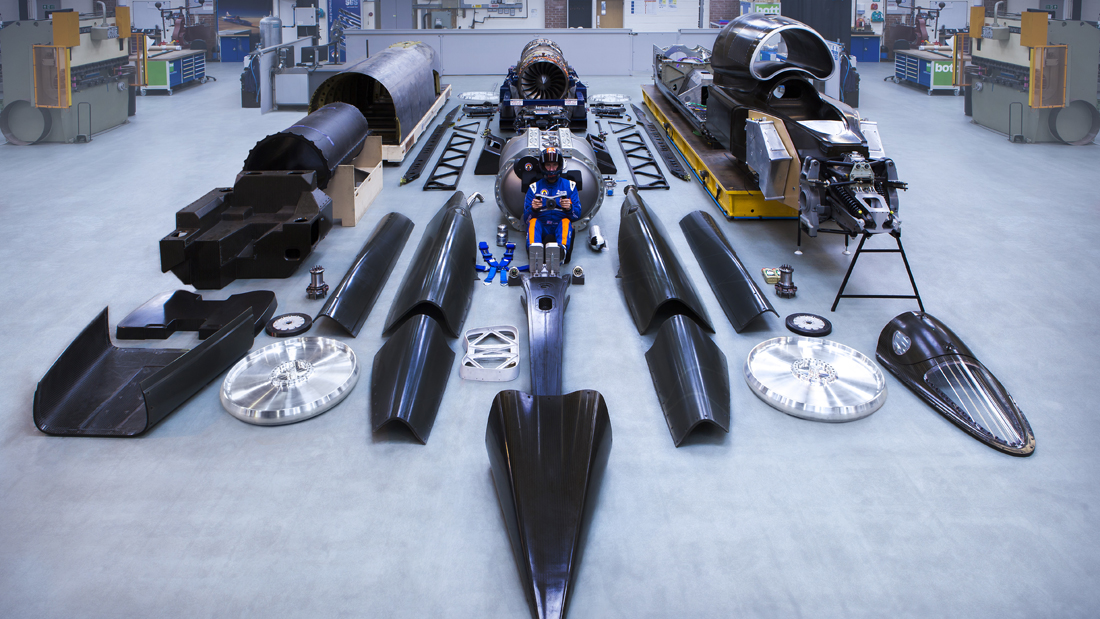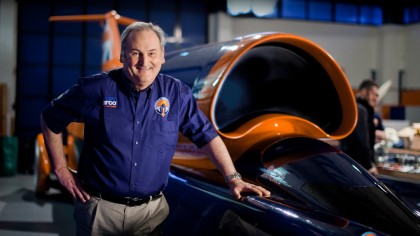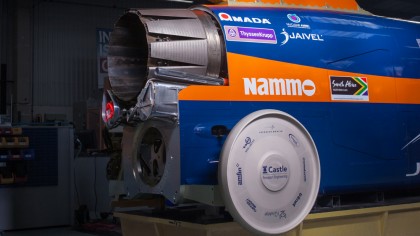Everything you need to know about the 1,000 mph Bloodhound SSC
The brainchild of F1 designers, aerospace engineers, and rocket scientists

The Bloodhound SSC is the UK's latest attempt at breaking the land speed record. It's a supersonic car that, when complete, should able to achieve 1,000 mph (1,609 kmh). The project is a collaboration between over 280 global companies, and has become a showcase for science and engineering.
Yesterday (September 24) the Bloodhound SSC, made its public debut. It's the first time the would-be record-breaking car has been seen by the press and public in functional form, although non-working models have been shown.
Naturally, techradar was at the unveiling, and I managed to interview some of the key people behind this sound barrier-shattering supercar.
The birth of Bloodhound SSC
The project was announced on 23 October 2008 by then Minister for Science Lord Drayson, at the Science Museum, London. The two key men behind the project were Richard Noble and Andy Green, both of whom were behind previous land speed record holders, Thrust2 and ThrustSSC.
Noble, 69, is an entrepreneur and adventurer. He was behind the wheel of the turbojet-powered Thrust2, when it broke the land speed record in 1983, reaching 633 mph (1,019 kmh) in the Nevada desert. Noble held this record until 1997, until his next project, ThrustSSC (supersonic car) reached 763 mph (1,228 kph), with RAF pilot Andy Green flooring it.

Noble told techradar, "We first broke the land speed record in 1983 with the Thrust2 car, we then followed that up in 1997 with the ThrustSSC car which was the first car to ever break the sound barrier on land. Huge public interest all over the world, in 1997 our website was the 5th largest in the world.
"There was an American called Steve Fossett. He's very famous for being the first to solo-ballon around the world, an amazing man. He had 110 world records, a lot of money, a lot of motivation, a lot of dedication. He decided he was after the land speed record, and that represented a real threat to us.
Sign up for breaking news, reviews, opinion, top tech deals, and more.
"So you can see the situation, what do you do? Do you just say 'well okay, let him get on with it', or shall we take him on? So we decided to take him on, but also we'd raise the bar so high that it would be very difficult for him to come back. That was the idea."
Sadly Fossett passed away before the competition could really get started, but the Bloodhound Project continued.
Triple threat
The Bloodhound SSC will be powered by not one, but three engines. These will ensure the vehicle is powered to 1,000 mph (1,609 kmh) in just 55 seconds. The primary engine is a prototype Rolls-Royce EJ200 jet turbine built for the Eurofighter Typhoon, and originally bound for a museum before it was donated to the project.
The Rolls-Royce jet will take the car to 300 mph (480 kmh), at which point a bespoke hybrid rocket from the experts at Nammo will power the car on to 1,000 mph (1,609 kmh).
Bloodhound rocket engineer Edward Fletcher says, "The type of hybrid rocket we're using is relatively new. That's not been developed by Bloodhound but our sponsor, Nammo. The rocket is still in development, but it's surpassing expectation. They've had funding from the European Space Agency. The pump we're using is new as well. Getting down to it, I think there will be some spin-offs in the space industry."
The third engine, a supercharged 5.0-litre V8 taken from a Jaguar F-Type, will be used to feed the rocket with its hydrogen peroxide fuel. The Jaguar Land Rover engine is able to pump up to 40 litres of propellant per second. That's enough to fill a bathtub in three seconds, fact fans.

Combined, the Bloodhound's three engines produce 133,151bhp, about the same as 180 Formula 1 cars. This will help the car cover a mile in just 3.6 seconds, faster than a bullet.